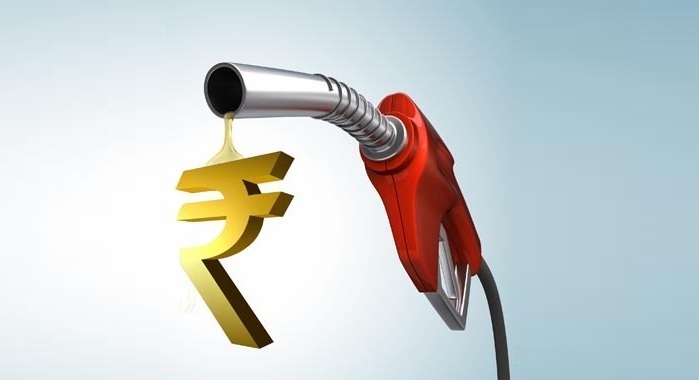New Delhi: There is no direct impact of the Russia-Ukraine crisis on India in terms of bilateral trade but a surge in oil prices poses considerable risk to the economy, an analyst report has said.
International oil prices which have surged past USD 100 per barrel “pose risks to external stability and currency movement,” a Bank of Baroda Economics Research report said.
Russia has launched military operations against Ukraine, stoking fears of significant disruption in the region, including loss of life. The West is ramping up financial sanctions against Russia and support for Ukraine.
The economic impact on the rest of the world is likely to come from higher commodity prices, boosting inflation but hurting growth – stagflation-lite.
“But if hostilities and tensions escalate to the point where Russia is excluded from the Western payments and fast-messaging systems, as was Iran, a severe stagflation shock could result from an interruption of energy supplies,” Invesco said in a report.
Russia supplies Europe with 40 per cent of its gas, half its solid fuel including coal and about a quarter of its oil.
So far, the US has not cut off Russia from the global payment system.
“While there will be no direct impact of the Russia-Ukraine crisis on India in terms of bilateral trade, the surge in oil prices as a result of the crisis poses considerable risks to the Indian economy,” the BoB Economic Research report said.
Both the Union Budget for the fiscal year beginning April 2022 and RBI’s monetary policy that kept interest rates steady, came much before this crisis and did not factor in the impact of the crude price shock.
“Both the Budget and RBI hence took a conservative estimate of crude prices at USD 75 per barrel which is likely to be a challenge going forward,” the report said.
India imports more than 80 per cent of its total oil requirement and is the world’s third-largest importer of crude oil. In FY21, India’s oil imports totalled USD 82.7 billion. In the current fiscal (April 2021-January 2022), oil imports have risen to USD 125.5 billion driven in part by economic recovery as well as higher oil prices.
However, with oil prices now hovering at near 8-year high, oil imports are likely to be higher.
“In 2021-22 fiscal, we estimate oil imports at USD 155.5 billion. For the next year, oil imports are likely to be higher due to improvement in economic activity. We estimate a modest 5 per cent increase in oil demand,” it said.
Ceteris paribus, it assumed the trade deficit to increase to USD 165 billion.
Further, a sustained increase in oil prices will push imports higher.
“We estimate that for every 10 per cent increase in oil prices on a permanent basis, oil imports are likely to inch up by USD 15 billion or 0.4 per cent of GDP. This will get reflected in higher current account deficit,” the BoB report said.
The rupee too has come under pressure due to higher oil prices, which lead to a burgeoning trade deficit and hence adversely impact the external stability.
Crude oil-related products carry a weight of 7.3 per cent in the wholesale price inflation (WPI) basket. Hence the direct impact of a 10 per cent increase in oil prices is estimated to be around 0.7 per cent on WPI. Adding the indirect impact, the overall effect can be around a 1 per cent increase in WPI inflation.
The impact on CPI inflation will be both direct and indirect – 0.15 per cent increase in retail inflation (CPI) because of a 10 per cent increase in oil prices and 0.25-0.35 per cent due to indirect impact on supply chains and price push on other commodities and services.
The report said Russia is not a major trade partner for India. In FY21, India’s exports to Russia were USD 2.7 billion or 0.9 per cent of India’s total exports. These are mainly pharmaceuticals and electrical machinery.
India’s imports from Russia were USD 5.5 billion or 1.4 per cent of total imports. Petroleum products form half of India’s imports from Russia and can be easily replaced with other markets.
“Hence impact on India’s bilateral trade with Russia is not likely to be significant,” it said.
Stating that the fiscal response to the crude oil price needs to be monitored closely, the report said the government is walking on the narrow road of fiscal consolidation and already elevated borrowing programme and thus the fiscal space for an increase in subsidies or cut in excise duty on petrol and diesel is limited.
Several developed countries including the US, UK and European nations have imposed sanctions on Russia to deter further increase in hostilities by Moscow. These have ranged from sanctions on banks as well as individuals and also export controls.
US has been at the forefront and announced sanctions on Russian banks (Sberbank and VTB Bank), export control measures (which will more than halve Russia’s high-tech imports) as well as sanctions on wealthy Russians and their families.
Further, restrictions have also been placed on the new debt and equity issue of 13 critical Russian financial entities. Also, the sale of all US items and any item using US technology/software/equipment to the Russian military and Ministry of defence has been prohibited.
Similar restrictions have been placed by the UK. This includes freezing the assets of Russian bank VTB (and 5 other banks) and arms manufacturer Rostec, sanctions on 5 more oligarchs (in addition to sanctions announced on 3 billionaire businessmen earlier) and banning Aeroflot from British airspace.
European Union has also announced sanctions against the 351 members of the Russian parliament who voted in favour of recognition of the two separatist states (Donetsk and Luhansk) and also against 27 individuals and entities. A travel ban applicable to the listed persons prevents these from entering or transiting through EU territory.
EU members also introduced export controls targeting Russia’s energy and transport sectors, and plan to choke its trade and manufacturing.
PTI
